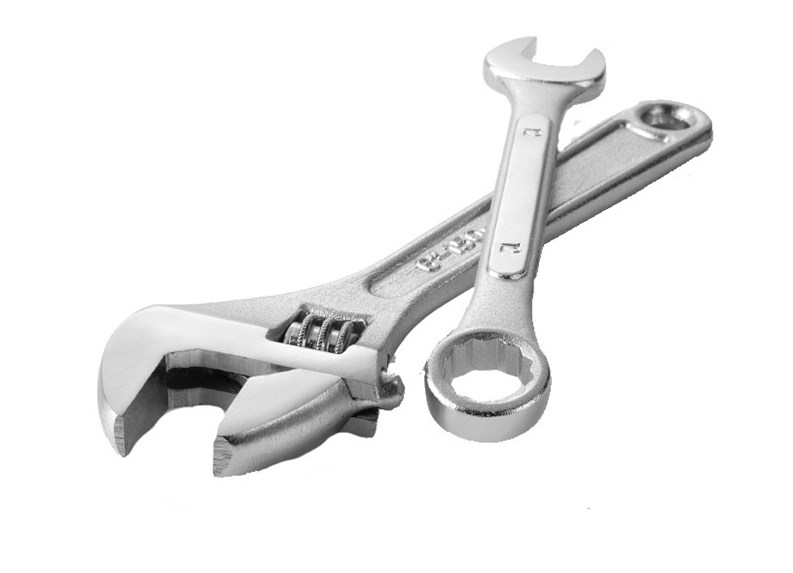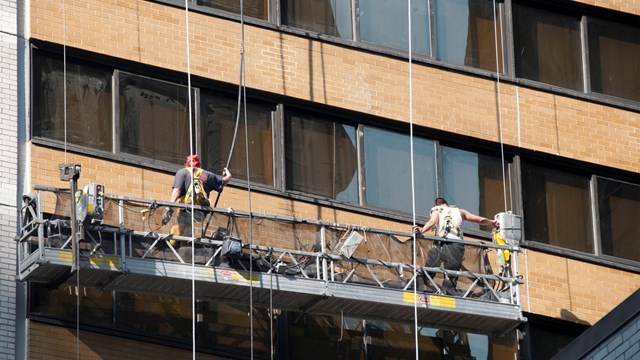Water - one of the great mysteries of life; Life itself isn't possible without it. Yet from the time of Noah and his ark, water has sometimes been a nuisance of great proportion.
There are three very common types of water leaks that affect our homes: water that leaks from a neighbor's apartment because of overflows or pipe breaks; water that drips, drips, drips from kitchen faucets, bathroom faucets, and toilets; and water that penetrates the building envelope and seeps inside through walls and ceilings.
Of these, the last of the three aforementioned - water that penetrates the building envelope - is perhaps the most frustrating to homeowners, management, and building staff. It can be a huge challenge to locate the point (or points) at which the water is penetrating the building.
Simply put, the building envelope is that part of the building that separates you from the outside elements. Outside walls, roof, windows, and doors are all part of the envelope. Any opening in the envelope can be a potential point of water entry. Once the water has breached the barriers designed to keep it out, it can travel quite a distance, both horizontally and vertically. So just because a water leak has terminated at a particular point in your apartment - your living room ceiling, for example - does not mean it came directly from above. It may even have traveled hundreds of feet horizontally before moving vertically and seeping through your ceiling. Water travels the path of least resistance, so its route through a building can be complicated.
Keeping in mind that your building's roof, bricks, and windows are designed to keep water out, so what does go wrong? The building envelope fails for five basic reasons:
"¢ Improper design
"¢ Poor workmanship during installation
"¢ Inadequate maintenance and inspections
"¢ Faulty or mismatched materials
"¢ Mishaps like lightning, rooftop furniture, or heavy objects puncturing the roof or floor
"¢ If a roof, window seals, or façade fails within a short time of their installation, it is deemed that the cause was either poor workmanship and or poor design in most cases.
Prevention is the best cure. Even the best roofs and windows installed by the best contractors need maintenance. The only effective way to head off leaks is to develop a schedule of inspections and maintenance for your roof, brickwork, and windows. While these inspections can be performed routinely by a properly trained superintendent, there should be a time - say, once a year - when inspections are performed by a professional.
Window frames - especially the aluminum types commonly used in new construction or in replacement windows - are vulnerable to thermal expansion. To account for this expansion, which at times can be twice the rate of the surrounding brick and mortar, the windows are not fitted tightly to the bricks, and the resulting gap is filled in with a flexible joint. A high-performance sealant is applied over the joint and attached to the window frame and brick. It is important that these seals are inspected often and maintained; otherwise, the result will be water penetration.
We all know what bricks and mortar are, but did you know that usually there are two rows of bricks and mortar on the front of a building? The outer brick is known as the masonry veneer. It's the façade of the building. The inner row is known as the backup wall.
In most prewar buildings, the backup wall is made of brick - usually poor-quality brick with the mortar slapped on. No one ever sees this row, so aesthetics really aren't important. In newer construction, the backup wall is usually made of masonry blocks, and the two layers of wall are tied together with wall ties. At every floor, the masonry veneer is supported by steel backer rods attached to the concrete floor. Above the backer rod is a sealant and a so-called "weep hole," which allows water to exit the wall cavity. It's this cavity that allows water to travel vertically down the building.
Water can penetrate at any point in the masonry veneer. If the masonry veneer fails and cracks, or if the weep holes fail, the result is water penetration. Fire escapes, TV antennas, roof ladders, and so forth are all attached to the masonry veneer. In time, the bolts and clamps that tie them to the masonry loosen, and if the seals around the bolts fail (assuming there were any in the first place), water can penetrate at this point. The seals must be checked often.
Above most windows is a window lintel. This is steel that extends across the opening of the masonry above the window. If the steel is exposed to the elements, the steel will rust. This galvanic action puts pressure on the masonry as the steel expands. The tolerance of bricks to this stress is lower than that of steel, and the resulting pressure on the masonry will in time crack it and allow water to enter - not to mention creating a dangerous potential for falling masonry.
Without going into great detail on roofs, as there are many different types and systems, water can penetrate at any point where the roof has a seam. The roof flashing, the copingstone of the parapet wall, pitch pockets, seams, and expansion joints all are potential points of entry for water. Add to this any human traffic on a roof, chairs used by sun-worshippers, accidents like heavy objects falling on the roof, and the chances of the roof being punctured rise dramatically.
Water leaks can be insidious, mysterious, and ultimately expensive, but regular maintenance and inspections are your building's first line of defense against water penetration and the damage it can cause - and that's just common sense.







3 Comments
Leave a Comment